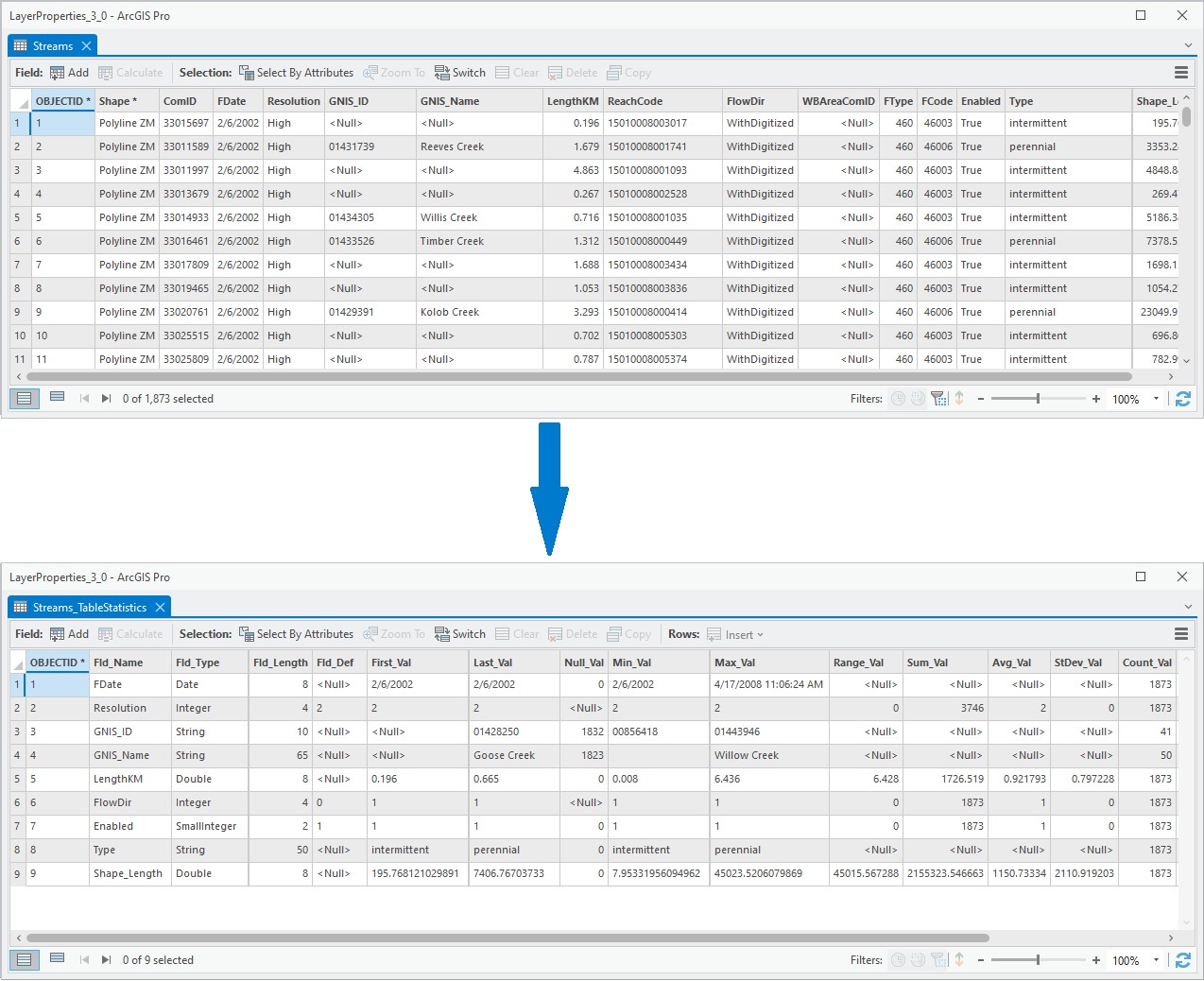Table Statistics
#new
Purpose
This tool analyses an attribute or standalone table and then collects properties and calculates statistics for its fields. The resulting information is stored in a new table.

Description
For every field the table may contain the following statistics:
-
First
- the value of the selected field with the minimum OID - for numeric, text, Date field types. In other cases, <Null> or " " is placed. -
Last
- the value of the selected field with the maximum OID - for numeric, text, Date field types. In other cases, <Null> or " " is placed. -
Null Values
- the count of <Null> values of the selected field - for numeric, text, Date, GUID, Global ID field types. In other cases, <Null> or "0" is placed. -
Sum
- sum of all values in the selected field - for numeric field types. In other cases, <Null> or "0" is placed. -
Count
- the count of values in the selected field that are not <Null> - for numeric, text, Date, OID, GUID, Global ID field types. In other cases, "0" is placed.
Please note that " " values in text fields are counted. -
Average
- the calculated value equal to Sum divided by Count - for numeric field types. In other cases, <Null> or "0" is placed. -
Min
- the minimum value of the selected field that is not <Null> - for numeric, text, Date field types. In other cases, <Null> or " " is placed.
Please note that " "values in text fields are considered as minimum. -
Max
- the maximum value of the selected field that is not <Null> - for numeric, text, Date field types. In other cases, <Null> or " " is placed. -
Range
- the calculated value equal to Max minus Min - for numeric field types. In other cases, <Null> or "0" is placed. -
Variance
- the mean of the squared difference of each value from Average of the selected field - for numeric field types. In other cases, <Null> or "0" is placed. -
Standard Deviation
- the square root of Variance - for numeric field types. In other cases, <Null> or "0" is placed. -
Duplicates
- Yes, if the selected field has duplicate values.
- No, if the selected field has no duplicate values.
For numeric, text, Date, GUID field types. In other cases, <Null> or " " is placed.
Besides, the table may contain the following field properties:
-
Name
- the name of the selected field. The parameter is added to output table by default. -
Alias
- the alias of the selected field. -
Type
- the type of the selected field. -
Length
- the length of the selected field - for numeric, text, Date, OID, GUID, Global ID field types. In other cases, "0" is placed. -
Precision
- the count of digits - for numeric field types. In other cases, "0" is placed. -
Scale
- the count of decimal places - for numeric field types. In other cases, "0" is placed. -
Default
- the specified default field value - for numeric, text, Date, BLOB field types. In other cases, <Null> or " " is placed. -
Editable
- Yes, if the selected field is editable.
- No, if the selected field is read-only. -
Required
- Yes, if the selected field is required.
- No, in other cases. -
Nullable
- Yes, if the selected field is allowed to contain <Null> values.
- No, in other cases.
Usage
-
Select the "Table Statistics" tool from the XTools Pro Table tools.
-
Select input dataset to calculate table statistics for.
-
Specify the name and location of the output table.
-
Select input fields for calculating statistics. Input fields will be added to the output table in order they've been selected.
-
Select field statistics to calculate and modify default field names if required.
-
Select field properties to calculate and modify default field names if required.
-
Press Run to calculate table statistics.









